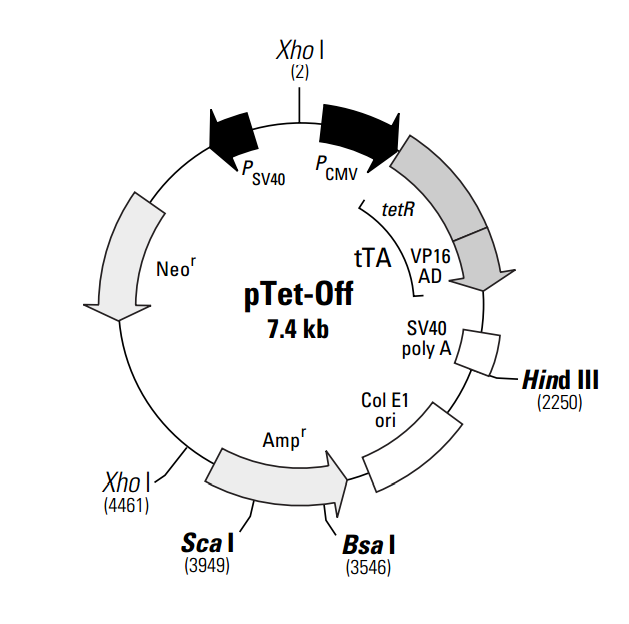
|
品牌 |
酶研生物 | |||||||||||||
货号 |
MY1604 | |||||||||||||
规格 |
2ug | |||||||||||||
价格 |
询价 | |||||||||||||
货期 |
现货 | |||||||||||||
pTet-Off expresses the tet-responsive transcriptional activator (tTA) from the strong immediate early promoter of cytomegalovirus (PCMV). tTA is a fusion of amino acids 1–207 of the tet repressor (TetR) and the negatively charged C-terminal activation domain (130 amino acids) of the VP16 protein of herpes simplex virus. pTet-Off was originally described as pUHD15-1neo by Resnitzky et al. (1994) and was created by insertion of a neomycin resistance gene into pUHD15-1 (Gossen & Bujard, 1992). pTet-Off can be distinguished from pTet-On by digestion with Hind III. 载体应用The pTet-Off Vector is used to develop stable Tet-Off cell lines. After a vector that contains a gene under the control of a tet-responsive element (TRE) is transfected into a Tet-Off cell line, the tTA binds to the TRE, thus activating transcription in the absence of tetracycline (Tc), or its derivative doxycycline (Dox). As Tc or Dox is added to the culture medium, transcription from the TRE is turned off in a highly dose-dependent manner. More information on TRE-containing vectors and protocols describing the construction of Tet-Off cell lines can be found in the Tet Systems User Manual (PT3001-1).
|
|
|||||||||||||










